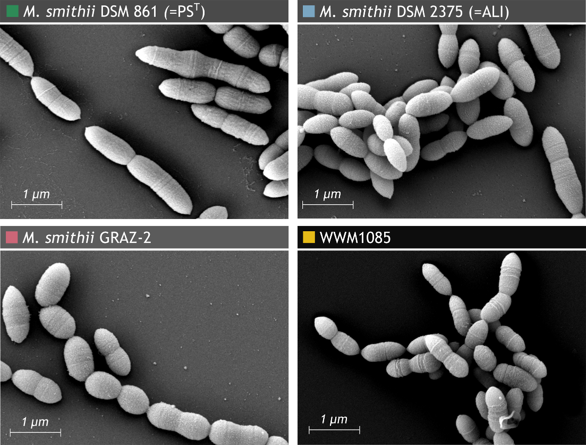
Scanning electron micrograph of Methanobrevibacter smithii, Methanobrevibacter smithii GRAZ-2, and Methanobrevibacter intestini WWM1085.
CoE Deputy Director of Research Christine Moissl-Eichinger and her team at the Medical University of Graz have identified a previously unknown methane-producing Archaea species from the human intestine.
Collaborating with colleagues from the Deutsche Sammlung von Mikroorganismen und Zellkulturen (DSMZ, Germany) and the University of Illinois (USA), they employed the latest techniques, such as targeted anaerobic cultivation, high-resolution electron microscopy, and comprehensive genome sequencing, to isolate two Methanobrevibacter strains.
The new species Methanobrevibacter intestini WWM1085 differs genetically and physiologically from all previously known species. It thrives exclusively under strictly anaerobic conditions, produces methane, and might be associated with inflammatory processes in the human body. The second strain discovered, a variant of Methanobrevibacter smithii called “GRAZ-2”, also shows unusual characteristics: It produces formate (formic acid), a molecule that can interfere with the energy metabolism of other microorganisms in the gut.
This work, published in the International Journal of Systematic and Evolutionary Microbiology, shows that the world of archaea in the human gut is more complex and relevant than previously assumed, and offers enormous potential for further research into health and disease.

